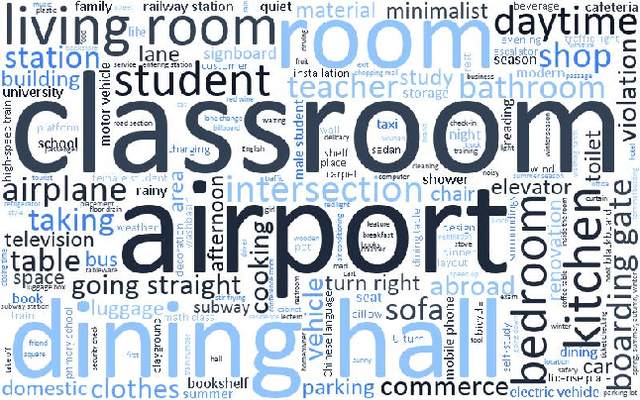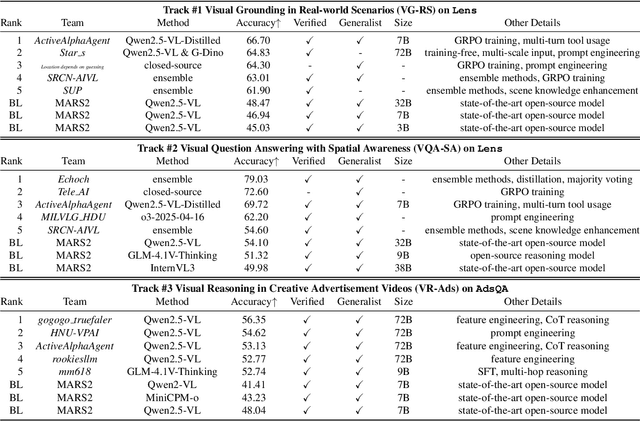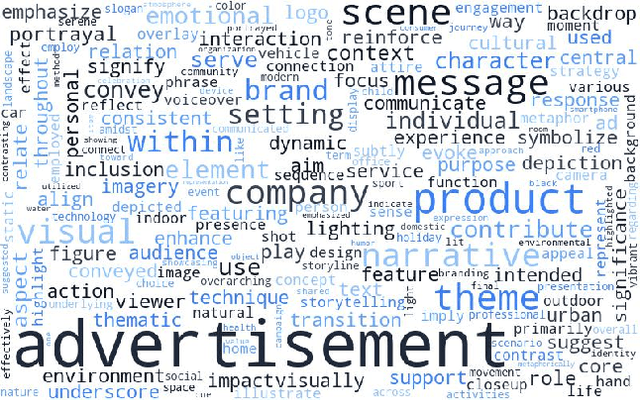Hui Li
Jiangnan University, Wuxi, China
Revisiting Generative Infrared and Visible Image Fusion Based on Human Cognitive Laws
Oct 30, 2025Abstract:Existing infrared and visible image fusion methods often face the dilemma of balancing modal information. Generative fusion methods reconstruct fused images by learning from data distributions, but their generative capabilities remain limited. Moreover, the lack of interpretability in modal information selection further affects the reliability and consistency of fusion results in complex scenarios. This manuscript revisits the essence of generative image fusion under the inspiration of human cognitive laws and proposes a novel infrared and visible image fusion method, termed HCLFuse. First, HCLFuse investigates the quantification theory of information mapping in unsupervised fusion networks, which leads to the design of a multi-scale mask-regulated variational bottleneck encoder. This encoder applies posterior probability modeling and information decomposition to extract accurate and concise low-level modal information, thereby supporting the generation of high-fidelity structural details. Furthermore, the probabilistic generative capability of the diffusion model is integrated with physical laws, forming a time-varying physical guidance mechanism that adaptively regulates the generation process at different stages, thereby enhancing the ability of the model to perceive the intrinsic structure of data and reducing dependence on data quality. Experimental results show that the proposed method achieves state-of-the-art fusion performance in qualitative and quantitative evaluations across multiple datasets and significantly improves semantic segmentation metrics. This fully demonstrates the advantages of this generative image fusion method, drawing inspiration from human cognition, in enhancing structural consistency and detail quality.
Is Your Prompt Poisoning Code? Defect Induction Rates and Security Mitigation Strategies
Oct 27, 2025Abstract:Large language models (LLMs) have become indispensable for automated code generation, yet the quality and security of their outputs remain a critical concern. Existing studies predominantly concentrate on adversarial attacks or inherent flaws within the models. However, a more prevalent yet underexplored issue concerns how the quality of a benign but poorly formulated prompt affects the security of the generated code. To investigate this, we first propose an evaluation framework for prompt quality encompassing three key dimensions: goal clarity, information completeness, and logical consistency. Based on this framework, we construct and publicly release CWE-BENCH-PYTHON, a large-scale benchmark dataset containing tasks with prompts categorized into four distinct levels of normativity (L0-L3). Extensive experiments on multiple state-of-the-art LLMs reveal a clear correlation: as prompt normativity decreases, the likelihood of generating insecure code consistently and markedly increases. Furthermore, we demonstrate that advanced prompting techniques, such as Chain-of-Thought and Self-Correction, effectively mitigate the security risks introduced by low-quality prompts, substantially improving code safety. Our findings highlight that enhancing the quality of user prompts constitutes a critical and effective strategy for strengthening the security of AI-generated code.
PhysWorld: From Real Videos to World Models of Deformable Objects via Physics-Aware Demonstration Synthesis
Oct 24, 2025Abstract:Interactive world models that simulate object dynamics are crucial for robotics, VR, and AR. However, it remains a significant challenge to learn physics-consistent dynamics models from limited real-world video data, especially for deformable objects with spatially-varying physical properties. To overcome the challenge of data scarcity, we propose PhysWorld, a novel framework that utilizes a simulator to synthesize physically plausible and diverse demonstrations to learn efficient world models. Specifically, we first construct a physics-consistent digital twin within MPM simulator via constitutive model selection and global-to-local optimization of physical properties. Subsequently, we apply part-aware perturbations to the physical properties and generate various motion patterns for the digital twin, synthesizing extensive and diverse demonstrations. Finally, using these demonstrations, we train a lightweight GNN-based world model that is embedded with physical properties. The real video can be used to further refine the physical properties. PhysWorld achieves accurate and fast future predictions for various deformable objects, and also generalizes well to novel interactions. Experiments show that PhysWorld has competitive performance while enabling inference speeds 47 times faster than the recent state-of-the-art method, i.e., PhysTwin.
From Scores to Preferences: Redefining MOS Benchmarking for Speech Quality Reward Modeling
Oct 01, 2025Abstract:Assessing the perceptual quality of synthetic speech is crucial for guiding the development and refinement of speech generation models. However, it has traditionally relied on human subjective ratings such as the Mean Opinion Score (MOS), which depend on manual annotations and often suffer from inconsistent rating standards and poor reproducibility. To address these limitations, we introduce MOS-RMBench, a unified benchmark that reformulates diverse MOS datasets into a preference-comparison setting, enabling rigorous evaluation across different datasets. Building on MOS-RMBench, we systematically construct and evaluate three paradigms for reward modeling: scalar reward models, semi-scalar reward models, and generative reward models (GRMs). Our experiments reveal three key findings: (1) scalar models achieve the strongest overall performance, consistently exceeding 74% accuracy; (2) most models perform considerably worse on synthetic speech than on human speech; and (3) all models struggle on pairs with very small MOS differences. To improve performance on these challenging pairs, we propose a MOS-aware GRM that incorporates an MOS-difference-based reward function, enabling the model to adaptively scale rewards according to the difficulty of each sample pair. Experimental results show that the MOS-aware GRM significantly improves fine-grained quality discrimination and narrows the gap with scalar models on the most challenging cases. We hope this work will establish both a benchmark and a methodological framework to foster more rigorous and scalable research in automatic speech quality assessment.
MDAR: A Multi-scene Dynamic Audio Reasoning Benchmark
Sep 26, 2025Abstract:The ability to reason from audio, including speech, paralinguistic cues, environmental sounds, and music, is essential for AI agents to interact effectively in real-world scenarios. Existing benchmarks mainly focus on static or single-scene settings and do not fully capture scenarios where multiple speakers, unfolding events, and heterogeneous audio sources interact. To address these challenges, we introduce MDAR, a benchmark for evaluating models on complex, multi-scene, and dynamically evolving audio reasoning tasks. MDAR comprises 3,000 carefully curated question-answer pairs linked to diverse audio clips, covering five categories of complex reasoning and spanning three question types. We benchmark 26 state-of-the-art audio language models on MDAR and observe that they exhibit limitations in complex reasoning tasks. On single-choice questions, Qwen2.5-Omni (open-source) achieves 76.67% accuracy, whereas GPT-4o Audio (closed-source) reaches 68.47%; however, GPT-4o Audio substantially outperforms Qwen2.5-Omni on the more challenging multiple-choice and open-ended tasks. Across all three question types, no model achieves 80% performance. These findings underscore the unique challenges posed by MDAR and its value as a benchmark for advancing audio reasoning research.Code and benchmark can be found at https://github.com/luckyerr/MDAR.
CodeRAG: Finding Relevant and Necessary Knowledge for Retrieval-Augmented Repository-Level Code Completion
Sep 19, 2025Abstract:Repository-level code completion automatically predicts the unfinished code based on the broader information from the repository. Recent strides in Code Large Language Models (code LLMs) have spurred the development of repository-level code completion methods, yielding promising results. Nevertheless, they suffer from issues such as inappropriate query construction, single-path code retrieval, and misalignment between code retriever and code LLM. To address these problems, we introduce CodeRAG, a framework tailored to identify relevant and necessary knowledge for retrieval-augmented repository-level code completion. Its core components include log probability guided query construction, multi-path code retrieval, and preference-aligned BestFit reranking. Extensive experiments on benchmarks ReccEval and CCEval demonstrate that CodeRAG significantly and consistently outperforms state-of-the-art methods. The implementation of CodeRAG is available at https://github.com/KDEGroup/CodeRAG.
MARS2 2025 Challenge on Multimodal Reasoning: Datasets, Methods, Results, Discussion, and Outlook
Sep 17, 2025



Abstract:This paper reviews the MARS2 2025 Challenge on Multimodal Reasoning. We aim to bring together different approaches in multimodal machine learning and LLMs via a large benchmark. We hope it better allows researchers to follow the state-of-the-art in this very dynamic area. Meanwhile, a growing number of testbeds have boosted the evolution of general-purpose large language models. Thus, this year's MARS2 focuses on real-world and specialized scenarios to broaden the multimodal reasoning applications of MLLMs. Our organizing team released two tailored datasets Lens and AdsQA as test sets, which support general reasoning in 12 daily scenarios and domain-specific reasoning in advertisement videos, respectively. We evaluated 40+ baselines that include both generalist MLLMs and task-specific models, and opened up three competition tracks, i.e., Visual Grounding in Real-world Scenarios (VG-RS), Visual Question Answering with Spatial Awareness (VQA-SA), and Visual Reasoning in Creative Advertisement Videos (VR-Ads). Finally, 76 teams from the renowned academic and industrial institutions have registered and 40+ valid submissions (out of 1200+) have been included in our ranking lists. Our datasets, code sets (40+ baselines and 15+ participants' methods), and rankings are publicly available on the MARS2 workshop website and our GitHub organization page https://github.com/mars2workshop/, where our updates and announcements of upcoming events will be continuously provided.
Fine-Grained Customized Fashion Design with Image-into-Prompt benchmark and dataset from LMM
Sep 11, 2025Abstract:Generative AI evolves the execution of complex workflows in industry, where the large multimodal model empowers fashion design in the garment industry. Current generation AI models magically transform brainstorming into fancy designs easily, but the fine-grained customization still suffers from text uncertainty without professional background knowledge from end-users. Thus, we propose the Better Understanding Generation (BUG) workflow with LMM to automatically create and fine-grain customize the cloth designs from chat with image-into-prompt. Our framework unleashes users' creative potential beyond words and also lowers the barriers of clothing design/editing without further human involvement. To prove the effectiveness of our model, we propose a new FashionEdit dataset that simulates the real-world clothing design workflow, evaluated from generation similarity, user satisfaction, and quality. The code and dataset: https://github.com/detectiveli/FashionEdit.
A.S.E: A Repository-Level Benchmark for Evaluating Security in AI-Generated Code
Aug 25, 2025Abstract:The increasing adoption of large language models (LLMs) in software engineering necessitates rigorous security evaluation of their generated code. However, existing benchmarks are inadequate, as they focus on isolated code snippets, employ unstable evaluation methods that lack reproducibility, and fail to connect the quality of input context with the security of the output. To address these gaps, we introduce A.S.E (AI Code Generation Security Evaluation), a benchmark for repository-level secure code generation. A.S.E constructs tasks from real-world repositories with documented CVEs, preserving full repository context like build systems and cross-file dependencies. Its reproducible, containerized evaluation framework uses expert-defined rules to provide stable, auditable assessments of security, build quality, and generation stability. Our evaluation of leading LLMs on A.S.E reveals three key findings: (1) Claude-3.7-Sonnet achieves the best overall performance. (2) The security gap between proprietary and open-source models is narrow; Qwen3-235B-A22B-Instruct attains the top security score. (3) Concise, ``fast-thinking'' decoding strategies consistently outperform complex, ``slow-thinking'' reasoning for security patching.
Pentest-R1: Towards Autonomous Penetration Testing Reasoning Optimized via Two-Stage Reinforcement Learning
Aug 10, 2025Abstract:Automating penetration testing is crucial for enhancing cybersecurity, yet current Large Language Models (LLMs) face significant limitations in this domain, including poor error handling, inefficient reasoning, and an inability to perform complex end-to-end tasks autonomously. To address these challenges, we introduce Pentest-R1, a novel framework designed to optimize LLM reasoning capabilities for this task through a two-stage reinforcement learning pipeline. We first construct a dataset of over 500 real-world, multi-step walkthroughs, which Pentest-R1 leverages for offline reinforcement learning (RL) to instill foundational attack logic. Subsequently, the LLM is fine-tuned via online RL in an interactive Capture The Flag (CTF) environment, where it learns directly from environmental feedback to develop robust error self-correction and adaptive strategies. Our extensive experiments on the Cybench and AutoPenBench benchmarks demonstrate the framework's effectiveness. On AutoPenBench, Pentest-R1 achieves a 24.2\% success rate, surpassing most state-of-the-art models and ranking second only to Gemini 2.5 Flash. On Cybench, it attains a 15.0\% success rate in unguided tasks, establishing a new state-of-the-art for open-source LLMs and matching the performance of top proprietary models. Ablation studies confirm that the synergy of both training stages is critical to its success.
 Add to Chrome
Add to Chrome Add to Firefox
Add to Firefox Add to Edge
Add to Edge